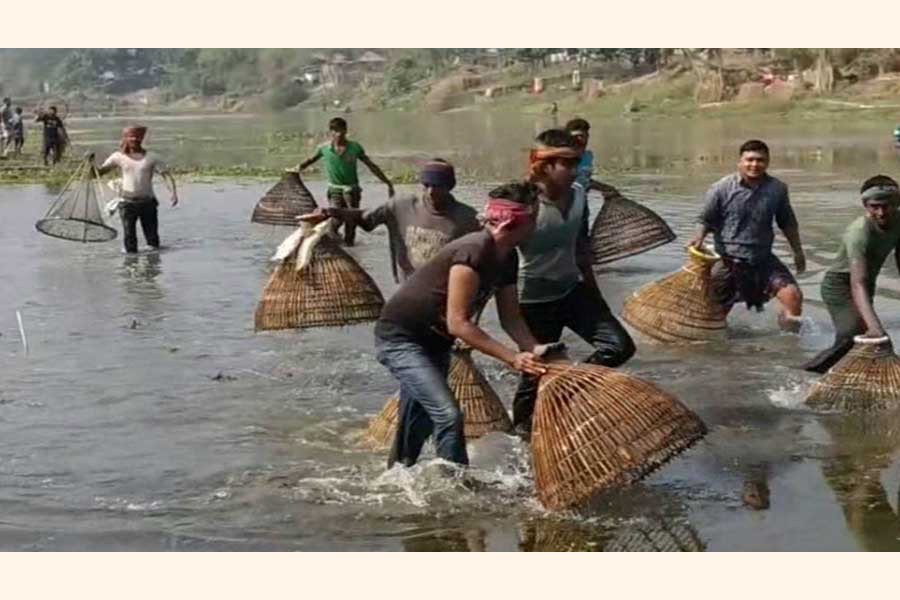This is the season of fishing carnival. In large parts of plain lands in this country, mass fishing gets going right from Poush and Magh on the Bangla calendar. Once the carnival continued up to Chaitra and Baishakh depending on the altitude of the area concerned. The lower is the plain land compared to the sea level, the later the catch in common water bodies or even large derelict ponds called deeghi or andhi.
Once fish were aplenty all across the country. But with the arrival of the lean season, submerged lands emerged from under water and farmers started preparation of those for cultivation of crops. That was the time when most agricultural land could be brought under cultivation of two crops -Aus and Aman paddy. Even in crop field where water stagnated on account of lower dents or pools, some small fish got confined unaware of the danger from future dry season.
Gone are those days with absence of water and vast areas becoming fit for Boro cultivation. Can today's young generation in rural Bangladesh-let alone those living in cities and towns -think of the post-harvest crop field teeming with koi, sing, puti, mini, shol and taki fish of limitless quantity?
One of the methods was to select a submerged land for fishing carnival. Villagers gathered with no fishing equipment but only a sizeable earthen or aluminum pot. The first thing they did was to gather the long stalks of paddy -Aman paddy stalks were as large as four to five metres long then-to create a barricade in a circle. This done, they started looking for fish hiding in pulp-like soil of the crop field. Unbelievably, there was fish everywhere. No, the fish could not be seen for the muddy water was unclear after removal of paddy stalks. Even a novice could catch two to three scores of koi fish along with few other varieties and expert hands five to eight scores depending on the lands.
Such community fishing often transformed into a carnival bringing together people of an entire village in an expedition of cooperative venture and celebration. Villagers were well-knit through such shared activities. The fish they caught provided for their nutrition and when large fish could be snared or prevailed upon, they shared those with their neighbours and relatives. In larger Barishal and Faridpur such fishing carnivals were once a common scene. But except in some pockets, water recedes so early or water does not submerge vast areas of crop lands at all today. So it has become a dying culture there.
However, in larger Sylhet -Moulvibazar and Sunamganj in particular -the fishing carnival still survives. When a whole village swoops on a water body looking for fish, it is indeed a sight to behold! They use fishing nets, polo (a finely shaped bamboo contraption) and other fishing equipment to catch fish in the muddy pool. The fish have nowhere to go because they are confined in an enclosure of water body.
The country's water bodies are declining fast and there is no knowing if the carnival will ever survive. With many varieties of the sweet-water fish already becoming extinct, others on the brink of extinction, yet others on the list of highly threatened, the country is not in a happy position now to ensure that the indigenous varieties will make it to their dining table for long. Now the cultured fish has become the main source of protein for the nation.
A country that once had a thriving monsoon with water rising in paddy field prided on the natural habitat for fish. That luxury has vanished forever. Artificially bred fish do not have taste like the varieties of natural sweet water. With population explosion, there is no alternative to cultured fish. At least this way the indigenous varieties can be saved.


